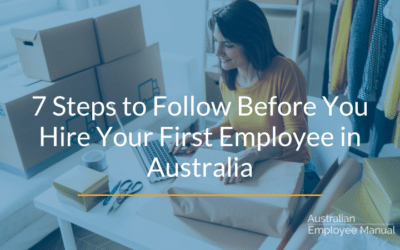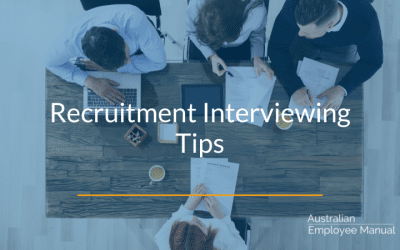The New Year is always a busy time for job seekers and businesses looking to fill roles for the coming year. But the world of job search has changed significantly in recent years. In the past businesses would list a vacancy on SEEK or another major job board, look at the resumes they had on file and wait for people to apply.
If they weren’t confident in their recruitment skills, were time poor or simply wanted a bigger applicant pool or more qualified applicants, they would engage a recruitment agency.
They would follow essentially the same process: list the job on major jobs boards, look at the resumes they had on file and wait for people to apply. Theoretically, they would also quietly chat with people in their network to invite applications.
Social media has changed the game. The trouble is most businesses haven’t kept up. They are still playing by the old rules and are missing out on great candidates who don’t play by the old rules.
10 Tips For an Effective Social Media Recruiting Strategy
For greater success filling roles, adopt a social media recruiting strategy when you are looking for candidates as an addition to your more traditional jobs boards.
1. Know the job search strategies job seekers are being taught
Refresh your knowledge of the training being given to job seekers through books such as “What Colour is Your Parachute” and online blogs. Talk with recent placements, read some blogs on job boards or talk with job search agencies to see what they are teaching job candidates about how to find jobs. Ensure you make it easy for job seekers to find you by matching their search strategy.
2. Have a solid social media presence
If you are recruiting for employees your non-negotiable social media presence is LinkedIn. Your LinkedIn business page should provide detailed information about your company, as well as provide immediate links to your vacancies. Candidates do check out your online presence before applying.
3. Be active where your clients hang out
If you are looking for IT or web people (or web savvy people), you need to be on Twitter. If you are looking for mums, your business needs to be on Facebook & Pinterest. If you are looking for younger candidates, consider Instagram or Tik Tok.
Match your social media presence to where your potential applicants are located. Candidates will look at your social media presence to get a feel for your company before applying for vacancies.
4. List your social media links on your website
If you have a social media presence, have links to your pages in the top right-hand banner on all your website pages … just under your contact phone number. Don’t hide them on a contact us page.
If you do have social media links in your design – make sure they work. Many websites have broken social media links, which defeats the purpose of having them.
5. List your vacancies on LinkedIn
Don’t list your current vacancies only on the jobs posted page (where people have to go hunting for them). Add your vacancies as a comment/link so your vacancies appear in the main news feed of a person’s page.
6. Tweet your vacancies on Twitter, Share on Facebook & Pin on Pinterest, Share to local community pages
Remember to also share each and every vacancy you list across all forms of social media where you are active. A hidden gem for advertising vacancies are local Facebook community groups or pages in the area where the vacancy exists. It is great to attract local candidates and to raise the profile of your business.
7. Keep it current
Only tweet, list, share or pin current links. If you regularly send out links that take candidates to positions that have closed or no longer being offered, people will learn to ignore your vacancies.
8. Use keywords
Keywords are the words people type into Google to find things. You are writing for two audiences – Google and people.
If you are advertising a vacancy, the most important keyword placement is the job title.
Yes, it is funky to use Office Superstar as the job title, but Google (and the people looking for a vacancy) don’t understand that the term means the same as Office Manager or Executive Assistant.
If you really must include a funky title, use both terms in the job title “Office Superstar / Executive Assistant” and you will appear more in search engine results.
Also remember to include common abbreviations as some people search only by the abbreviation e.g.: Human Resource (HR) Officer, Registered Nurse (RN).
9. Keyword your vacancy links
Keywording also goes for sharing links to your vacancies. Don’t just say “We are hiring” and then attach a link . Keyword the link to highlight the vacancy name and location “Engineering vacancy in Brisbane <link>”
Only if you have space include your company name as people search for the job role first and the company second.
10. Use hashtags
>Love them or loathe them, hashtags are designed to make it easier for people to search for information.
Actively searching savvy job seekers as well as passive seekers, will often set up a web stream around a hashtag, to feed them every job that may come up. Hashtag EVERY vacancy. Hashtags to use: #hiring #HR #jobopening #employment #recruitment #jobsearch #joblisting.
You can also use geographic hashtags #bnejobs #sydneyjobs etc. Don’t use #newjob unless you are looking for people who have just landed a new job and are unlikely to want to leave for a while.
If you want to find people looking for work to directly approach them to apply, use #jobhunt #lookingforajob
Some last words about recruitment
The web is virtually instantaneous. If you try a strategy to recruit people to your vacancy and it isn’t delivering the results you want, adjust your strategy/keywords/places you advertise and measure the new results. Never be afraid to adjust, test and learn.
One last thing – remember that all your ads on social media still need to comply with all the laws surrounding anti-discrimination in job vacancy advertising. Social does not mean that all bets are off!




